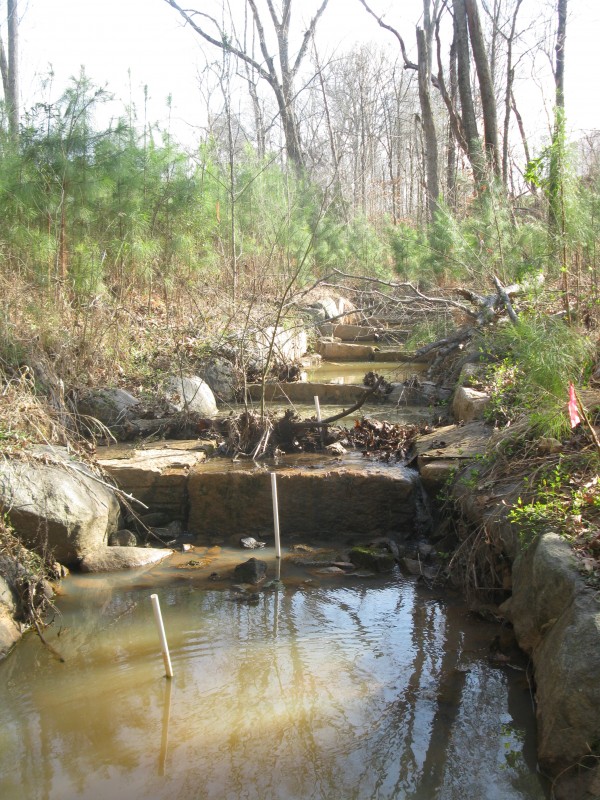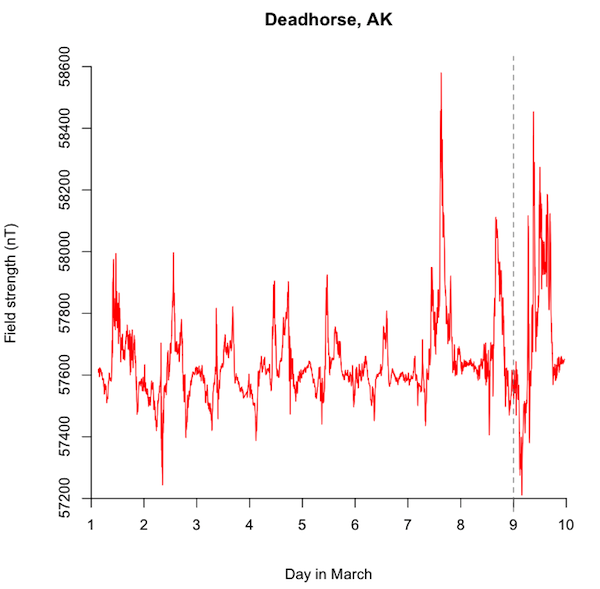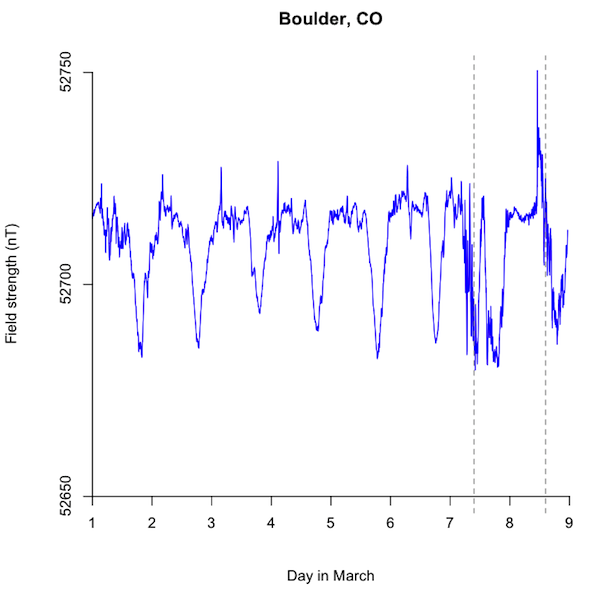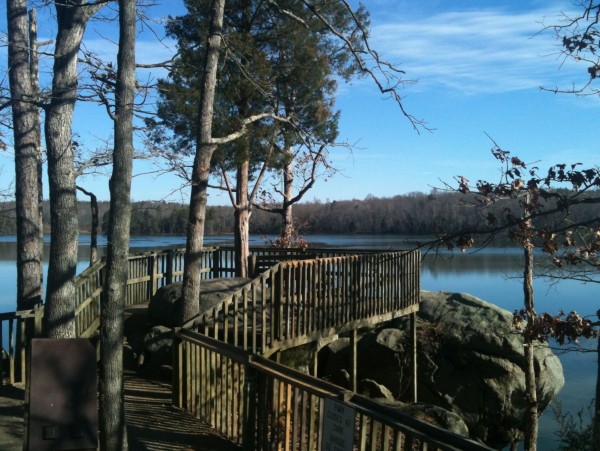![]() Right now I have a graduate student working on a project to understand the effects of stream restoration in altering patterns of groundwater-stream exchange. She’s working in four stream reaches with varying restoration patterns and watershed land uses. In one of her streams, there is a restoration structure she calls “the temple.” I’d walked the lower bit of stream and the upper bit of stream, but somehow I’d managed to miss this feature that is having remarkable effects on the transient storage dynamics of the stream. This week, I rectified my omission and visited the temple.
Right now I have a graduate student working on a project to understand the effects of stream restoration in altering patterns of groundwater-stream exchange. She’s working in four stream reaches with varying restoration patterns and watershed land uses. In one of her streams, there is a restoration structure she calls “the temple.” I’d walked the lower bit of stream and the upper bit of stream, but somehow I’d managed to miss this feature that is having remarkable effects on the transient storage dynamics of the stream. This week, I rectified my omission and visited the temple.

The stream restoration feature known as "the temple". The white pipes are our piezometers for measuring exchange between stream and subsurface water. Photo by A. Jefferson, March 2012.
What the photo above doesn’t fully capture is how large a volume of water is stored behind each of the rock step structures. This picture was taken as water was receding after a pretty high flow event (notice all the debris trapped at the top of one step), but at lower flows there is little or no water going over the top of the steps. Instead, all of the water goes under or around the rock structures and pools of water more than 1 m deep occur between each of the structures. Such big pools at such low flow volumes could have a dramatic effect on things like stream temperature and nutrient dynamics.
This structure is all the more remarkable because it occurs at an interesting geomorphic transition in the stream. Upstream of the temple, the stream is restored using typical features like cross-vanes and riffle/pool features. It is low gradient and not confined in a valley.

Upstream of the temple, restoration structures include a riffle (in the background) and cross vanes (foreground, here submerged by high water). Photo by A. Jefferson, March 2012.
Immediately downstream of the temple, there is a big pool and then a long reach floored with bedrock (obviously not restored). Downstream of the bedrock reach, the stream crosses into the floodplain of a larger watershed and has lots of fine grained alluvium to contend with.
Thus, it appears that “the temple” restoration feature is placed at an important geomorphic transition in this stream. It’s in the place where the stream briefly enters a more confined valley and it’s the steepest part of the stream. In other Piedmont streams, I’ve seen bedrock cascades in some places like this, but the stream restoration designers wouldn’t have covered over a feature like that. Instead, maybe there was a knickpoint retreating through soil, saprolite or colluvium that could cause a lot of potential instability in the reach above. The “temple” feature then would be a way of preventing further knickpoint retreat by creating a short high-gradient section. I really wish I’d seen this area before the stream was restored. Instead, I marvel at the highly engineered form of the stream as it passes through the temple, and look forward to seeing what my grad student finds out about the effects of this structure on the transient storage and water quality in the stream.









Nice plan for content warnings on Mastodon and the Fediverse. Now you need a Mastodon/Fediverse button on this blog.